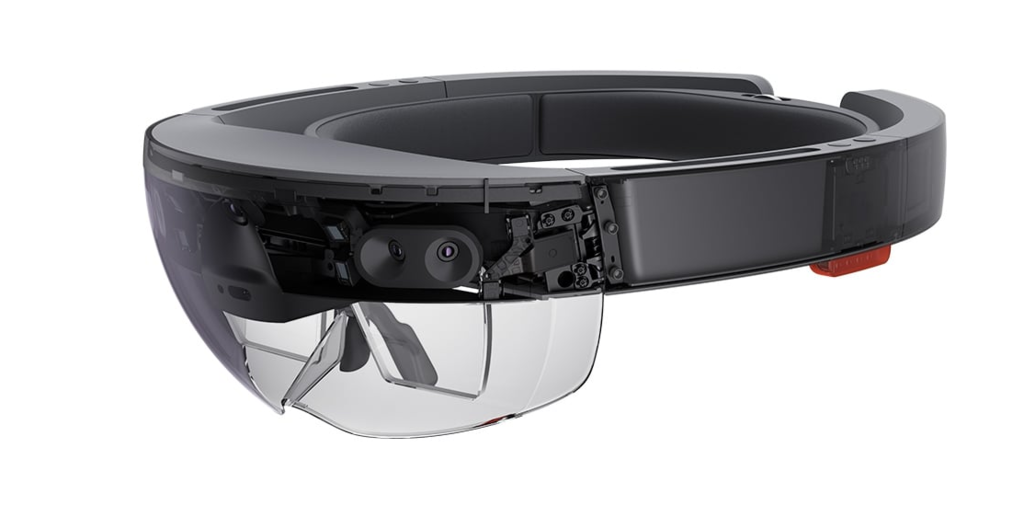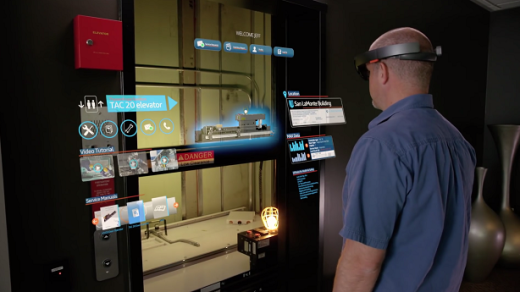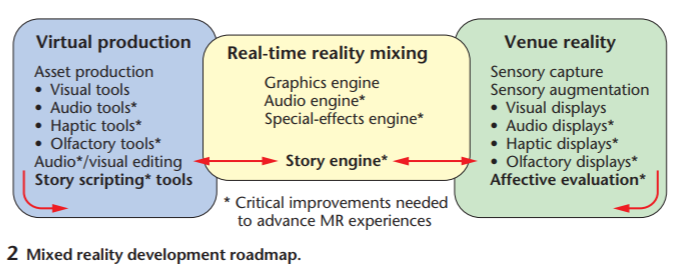Notice: I haven't confirm whether rights of using pictures below are available or not. Notice: It's still under construction. Any idea is welcome.
Mixed Reality (MR)
MR in recent years
The concept of Mixed Reality (MR) has been in the 1990's. However, the mixed reality headset in recent years (after 2016) has the following appearance (the picture is HoloLens).

Fig. 1 Appearance of MR headset
VR headset is closed, immersive type. You can see only virtual images in three dimensions. On the other hand, the MR head set is transparent type (see-through). The wearer can see both the virtual stereoscopic image and the surrounding scenery in the same time.
The MR head set can grasp the wearer's gaze direction, posture and movement in real time. Even the wearer changes his/her gaze direction, posture or he/she moves, it seems to him/her that the virtual stereoscopic image is "placed" in the real space.

Fig. 2 A man operating in MR

Fig. 3 People working together in MR
In brief, when we wear a MR headset, we can mix real scenes and virtual images and see them. Therefore, it is called Mixed Reality.
History of MR
Historically, the first concept of MR was proposed by Milgram et al. (1994):
An MR experience is one where the user is placed in an interactive setting that is either
- real with virtual asset augmentation (augmented reality, AR) or
- virtual with real-world augmentation (augmented virtuality, AV) that overlays real information on virtual world.

Fig. 4 First definition of MR
Huges (2005) embodied the concept of MR:
MR is the mixed visual and audio content for both
- AR (such as image, sound, smell, heat. The left side of the figure below) and
- AV (Virtual world overlaid with information of real world obtained with such as camera and sensors. The right side of the figure below)
which is captured, rendered and mixed by graphics and audio engines.

Fig. 5 MR as mixed of AR and AV
In this case, actual images are supposed to be acquired from the camera. This is a bit different from the current one.
Adriana et al. (2009) sophisticated the definition of MR:
MR is the merging of real and virtual worlds to produce new environments and visualizations where physical and digital objects co-exist and interact in real time.
They removed the somewhat confusing concept of AV from MR and added real space instead (meaning has not changed). They also emphasized spatiality, interactivity and real-time nature.
Citations and references
Adriana de Souza e Silva, Daniel M. Sutko: Digital Cityscapes: merging digital and urban playspaces. New York: Peter Lang Publishing, Inc., 2009
Dieter Schmalstieg and Daniel Wagner, First steps towards handheld augmented reality, Seventh IEEE International Symposium on Wearable Computers, 1530-0811(2003), 127-135
D.E.Hughes, Defining an Audio Pipeline for Mixed Reality, Proceedings of Human Computer Interfaces International, Lawrence Erlbaum Assoc., Las Vegas (2005)
- Milgram and A.F. Kishino, “Taxonomy of Mixed Reality Visual Displays,” IEICE Trans. Information and Systems, vol. E77-D, no. 12, 1994, pp. 1321-1329.
Reference: "Mixed Reality in Education, Entertainment, and Training"